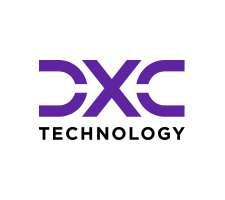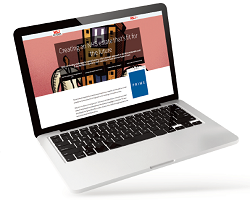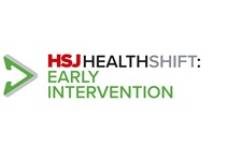Tactical use of technology could make – or break – the delivery of the 10-Year Health Plan and ensure the NHS is sustainable in the long-term, writes DXC’s Jo Jackson
Sponsored and written by
The NHS Fit for the Future: 10-Year Health Plan for England was published this month with a flurry of interest and a sprinkling of criticism. And I’m sure it has been the topic of conversation within wards and waiting rooms; with patients and providers, eagerly awaiting the publication to land and deliver on its mission.
The 10-Year Health Plan sets out a clear trajectory for the NHS to embrace digital transformation with a focus on integrated systems, enhanced data utilisation, and technology-enabled care delivery. The success of these policies hinges on effective implementation and a shift to operational practices to fully leverage technology investments.
The plan opens a lot of questions
Is technology the key to the NHS’s reinvention? Is the NHS behind the technological curve? Will the 10-Year Health Plan propel the NHS to the front?
I could not attempt to answer these questions in this short article. However, having looked at the technology policies within the 10-Year Health Plan, there are some ways the NHS can deliver technological quick wins and get on track to achieve some of the many short-term benefits that technology can offer.
Let’s focus on a couple of the technological elements I have experienced and have proven to work in many industries, including our own NHS. These are elements that create productivity gains, reduce administration burden, and increase the speed at which patients can access care in hospitals and community settings, all of which are raised within the plan:
- Productivity improvement target: Called out as a short-term plan, with a three-year timeline (2025-2028) to urgently resolve the NHS’s productivity crisis.
- Outpatient care transformation: Radically reducing outpatient care in hospitals and shifting to community.
Here’s a closer look at how DXC is already supporting healthcare customers within these two areas:
The plan specifically calls out a productivity improvement target: “Achieve 2 per cent year-on-year productivity gains in the NHS for each of the next three years (annual target) 2025-2028.”
It states: “The era of the NHS’s answer always being ‘more money, never reform’ is over. It will be replaced with a new value-based approach focused on getting better outcomes for the money we spend.”
One way to demonstrate how the NHS is achieving better outcomes for the money spent is through our partnership with Barts Health. This collaboration focuses on using automation tools to improve the quality, speed and throughput in administrative-heavy tasks.
Barts Health is using DXC’s robotic automation tool, DXC RaaS (Robotic as a Service), to transform its HR operations. The hospital group was looking for a scalable and cost-effective solution for streamlining HR processes while maintaining high standards of accuracy and compliance.
In 2021, engineers and product teams from Barts Health and DXC collaborated to design, deploy and maintain robotic automation systems within the hospital group’s people services department. The resulting RaaS solution began automating routine HR tasks, resulting in increased accuracy, reduced administrative burden, and significantly accelerated operations.
In 2025, Barts Health extended its contract with DXC and is now looking to widen this service across more departments within the hospital group. This expansion aims to drive further efficiencies and improve the quality and accuracy of tasks that are heavy on administration.
Barts Health uses robotics to transform HR operations | DXC Customer Stories
Outpatient care transformation
The plan refers to the transition “[from] hospital to community”. It states how the NHS does not feel like a single, coordinated, patient-oriented service. Based on our experience, the NHS is largely hospital-centric, detached from communities, and organises care into multiple fragmented silos. The plan emphasises the need to adopt a model that offers continuous, accessible, and integrated care.
An alternative is the Neighbourhood Health Service, which would bring care into local communities. It aims to unite professionals into patient-centred teams and eliminate fragmentation, thereby revitalising access to general practice and enabling hospitals to focus on providing world-class specialist care to those who need it.
A more integrated approach must be taken to allow multiple organisations and healthcare providers to share patient information and provide access to single patient records. It’s important to empower individuals to actively participate in their own care through personal health budgets and care plans. Achieving this will likely take more than three years, but regardless of the timeline, the preventive principles this is based on will require a technology transformation to make it a reality.
This challenge is not exclusive to the NHS; it is a global issue as healthcare systems worldwide continue to struggle to contain costs while under pressure to deliver better outcomes. Like the NHS, their future relies on shifting away from a sickness model to a wellness approach that focuses on changing behaviours.
The DXC white paper, Healthcare in the cloud: Improve outcomes by breaking down traditional boundaries, illustrates that this approach requires healthcare organisations to move away from traditional business-to-business models (where doctors interact solely with pharmaceutical providers), which do not promote healthy behaviours because no one is paid to keep people well. Instead, a more innovative, agile business-to-consumer model would encourage providers and other stakeholders to motivate patients to adopt healthier behaviours.
We’re witnessing a shift towards value-based care across all healthcare markets. The health and social ecosystem will begin to draw from the same financial resources to deliver care. This will open doors for transformational initiatives aimed at enhancing wellness and improving health and social services.
Cloud and cloud-first strategies can deliver this healthcare model more efficiently and cost-effectively. To achieve a seamless transition from hospitals to community-based healthcare, we must consider technological advances, including cloud solutions, as viable options to dismantle barriers and lead us toward a more sustainable, integrated, and personalised health system.
No matter what your perspective is on the 10-Year Health Plan, it’s clear that technological advancements will play a crucial role in its success. We all use modern technology in our daily lives – whether booking holidays, purchasing groceries, or staying connected with family and friends around the world. We need to adopt the same approach in healthcare.
The NHS, as it currently stands, is not sustainable. Integrating automation tools, cloud computing and AI, along with leveraging the vast amounts of data we have within the NHS, will transform how we access healthcare and how we treat and prevent illness for everyone.





























